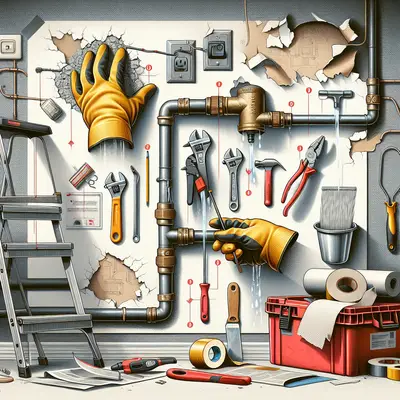Step 1: Identify the Problem
The first step in any repair process is to accurately identify the problem. Whether it's a leaky faucet, a squeaky door, or a faulty light switch, understanding the issue is crucial. Do some research online, watch relevant videos, or consult DIY home repair books to know what you're dealing with. Remember, incorrect diagnosis can lead to unnecessary work or, worse, causing more damage.
Step 2: Gather Necessary Tools
Once you've identified the problem, gather the right tools for the job. Common tools you might need include a screwdriver set, a wrench, a hammer, and a tape measure. A good-quality toolkit can be a lifelong investment, so consider getting one if you don't already have these essentials. Also, don't forget to wear proper safety gear, like gloves and safety glasses, to protect yourself while working.
Step 3: Plan Your Repair Strategy
Now it's time to develop a repair strategy. Depending on the complexity of the problem, you might need to break down the repair into smaller, manageable parts. This step-by-step approach will not only make the task less daunting but also ensure you don't miss any important steps along the way.
Step 4: Execute the Repair
With your plan in place, you can now start the repair. Follow your action plan carefully, and remember to be patient. Some repairs might require you to leave parts to dry or settle overnight. Don't rush the process; good work takes time.
Step 5: Test and Review
After completing the repair, it's important to test your work to ensure the problem is truly fixed. Turn that faucet on, open and close that door, or flick that light switch a few times. If everything works as it should, congratulate yourself on a job well done. If not, don't be disheartened. Review your steps to see where things might have gone wrong and try again.
Conclusion
DIY home repair may seem daunting at first, but with the right approach and tools, it can be a rewarding experience. These five steps will guide you through most basic home repairs. Remember, practice makes perfect. So, don't shy away from those small repair tasks around your home. They are great opportunities for learning and honing your handyman skills. Happy fixing!



